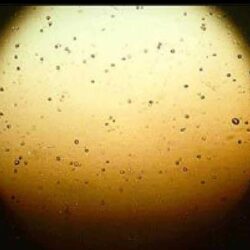Explore Radon Knowledge With RadonCare
Radon Insights: Explore the Unseen Threat
RadonCare’s Blog covers a range of topics, from understanding the basics of radon to practical tips for mitigation. Stay informed about the latest developments in radon services. Read on for valuable insights that empower you to create a healthier space for you and your loved ones.
Post Mitigation Testing, Maintenance & Peace of Mind
Just installed a radon mitigation system? Learn when and how to test your radon levels, what maintenance steps to take, and how to keep your system working efficiently for years to come.

DIY Radon Mitigation
Empower Yourself – DIY Radon Mitigation Solutions for the Ambitious DIYers – Taking Control of Your Radon Journey Empower Yourself with

History of Radon & Related Discoveries
Explore the complex history of radon, from early miner’s diseases to key discoveries in radioactivity and its health impacts.

Sump Pit Sealing: A Crucial Step for Radon Safety
What is a sump pit, how it works, and how to make sure its not causing a problem.

Radon System Design – Pressure Field Diagnostics (PFD)
Best practices when designing a radon mitigation system. How we ensure the system is effective (lowest radon levels), energy efficient, and quiet.

How Do I Test My Home For Radon?
The do’s and don’ts of home radon testing, type of tests and what to look for when you receive your results.
Industry Updates: Staying Ahead in Radon Services
RadonCare brings you the latest industry updates and news in the field of radon services. Stay ahead with our curated content that keeps you informed about advancements, regulations, and trends. Explore Radon News and stay on top of the radon landscape.
TEDx - Dr. Aaron Goodarzi on Radon
Radon in our Homes: The Science Behind the Danger - Aaron Goodarzi @TEDxYYC
Not Enough Being Done to Mitigate Radon in Canadian Homes, Joint Alberta-B.C. Study
Lifetime risk of lung cancer can be reduced by 40 percent.
Canada Has the Second Highest Levels of Radon In the World, But It’s a Fixable Problem
Radon is a serious health risk but one that can be easily corrected.
How I Discovered Radon In My Home and Mitigated It
What the mitigation process looks like and what you can expect from correcting it.
The Myths and Misconceptions Surrounding Radon
Common radon misconceptions and the truth behind them.
Radon: The Silent Killer Lurking in Your HomeRadon: The Silent Killer Lurking in Your Home
Radon gas is present everywhere but the amount in your home is most important to determine through testing.
Dangerous Levels of Radon Gas Are Being Found in More Homes Than Ever
The invisible threat inside your home: Dangerous levels of radon gas are being found in more houses across Canada than ever before.
Radon Gas and Arsenic Exposure
Halifax cancer researcher studies effects of radon gas and arsenic exposure.
Canadians Unaware of Radon Risks
Only over half of Canadian households aware about radon, the number one cause of lung cancer for non-smokers.
Radon Exposure Before, During and After Pandemic
U of C researchers look at home radon exposure before, during and after pandemic.er Pandemic.
Rachael Malmberg Warns of Radon Risk
Athlete with lung cancer warns of radon levels in homes.
Radon: A Real Risk
Both at work and at home, this colourless gas is making people sick.
Radon: Public Health and Cancer Prevention
Radon: Public Health and Cancer Prevention - A New Whiteboard Video from the NCCEH.
Radon Testing Not a Priority for Public Schools
Radon testing not a priority for Calgary public school board after initial test of 10 buildings.
Environmental Design Contributors of High Radon
Understanding behavioral environmental design contributors of high radon exposure to protect Canadian health.
Radon Responsible For More Deaths Than Car Accidents
Radon responsible for more Canadian deaths per year than motor vehicle collisions.
Nurse Urges Albertans to Test for Radon
Nurse urges Albertans to test after she finds unsafe radon levels in her family's home.
1/6 Rural Alberta and 1/8 Calgary Area Homes Have Radon
Research suggests exposure to deadlyradon gas in Alberta varies depending on where you live.